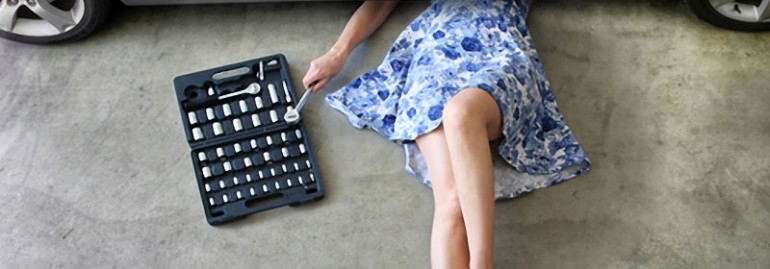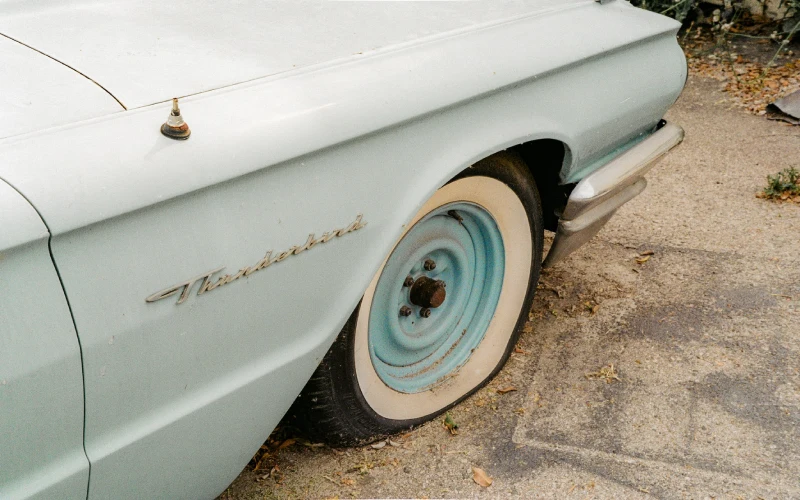3 Car Problems That You Can Fix in Your Garage with Simple Tools
6 min read
Your car breaks down. And the only person who is happy is your mechanic. He gets yet another opportunity to make some ‘extra’ dollars off the repair work. However, not all mechanics will try to rip you off, but unfortunately, they are very few and far between.
If you have a way with garage tools and the good-ol’ wrench, you can save a lot of repair money by fixing your car in the comfort of your home. Make sure you have your tools and gloves for safety. And there should be ample light in the garage or wherever you are fixing your car so that you don’t keep losing screws and bolts here and there.
Have you ever been stuck with a car problem that seemed too difficult to fix yourself? Good news – you don’t have to take your car to the mechanic every time it has an issue.
In this article, we’ll discuss 3 common car problems and how you can fix them using simple tools from your garage.
Table of Contents
Flat tire

Got a spare wheel but don’t know how to change the flat tire? Changing a flat tire may cost you around $20 at a mechanic’s workshop. And over 60% car owners dread getting their hands dirty or getting hurt in the process. But considering the exorbitant call-out fee of a mobile mechanic, a DIY wheel replacement is worth a shot.
Flat tires are a common problem that can happen to anyone at any time. Some common causes of flat tires include:
- Punctures: A puncture is a small hole that is caused by something sharp, such as a nail, screw, or piece of glass. Punctures can be difficult to see and can cause a slow leak or a sudden loss of air pressure.
- Road hazards: Debris on the road, such as rocks or broken glass, can cause damage to your tires. Potholes, curb damage, and other rough surfaces can also cause damage to your tires.
- Age and wear: As tires get older, they can become more prone to flat tires. Tires that are heavily worn or have become damaged can also be more prone to flat tires.
- Improper inflation: Tires that are not properly inflated can be more prone to flat tires. Underinflated tires can cause the sidewalls to flex excessively, which can lead to a flat tire. Overinflated tires can also be more prone to flats because they may be more prone to damage from road hazards.
- Manufacturing defects: In rare cases, flat tires can be caused by a manufacturing defect. If you suspect that your flat tire may have been caused by a manufacturing defect, you should contact the tire manufacturer for more information.
If you have a flat tire, it’s important to address the problem as soon as possible. Driving on a flat tire can cause damage to the tire and the rim, and it can also be dangerous. If you’re not comfortable changing a flat tire yourself, you can call a roadside assistance service or take your car to a tire repair shop for assistance.
Flat tire, pressure control, address the problem, damage, tire, rim, dangerous, change flat tire, roadside assistance service, tire repair shop, assistance.
Changing a flat tire is a relatively simple process that can be done with just a few tools.
Here are the steps you can follow to change a flat tire:
- Find a safe place to change your tire. If you’re on the side of a busy road, try to pull as far off to the side as possible. Make sure your car is in park and the emergency brake is on.
- Locate your spare tire, jack, and lug wrench. These are usually found in the trunk of the car, although some cars may have them stored in other places (e.g., under the car, in a side panel).
- Loosen the lug nuts on the flat tire. Use the lug wrench to turn the lug nuts counterclockwise. You may need to put some muscle into it, but don’t remove the lug nuts completely just yet.
- Jack up the car. Use the jack to lift the car off the ground until the flat tire is off the ground. Make sure the car is stable before proceeding.
- Remove the lug nuts and take off the flat tire. Once the lug nuts are loosened, you should be able to remove them by hand. Then lift the flat tire off the car and set it aside.
- Put on the spare tire. Line up the holes in the spare tire with the bolts on the car, and then push the tire onto the car. Replace the lug nuts and hand-tighten them as much as you can.
- Lower the car and fully tighten the lug nuts. Use the lug wrench to fully tighten the lug nuts on the spare tire. Then, lower the car back down to the ground and make sure the spare tire is properly seated.
- Check the air pressure in the spare tire. Make sure the spare tire is properly inflated to the recommended pressure (which you can find in your owner’s manual or on the tire itself).
- Drive carefully to a tire repair shop. Because spare tires are typically not meant for long-term use, it’s important to get the flat tire repaired or replaced as soon as possible.
Poor Throttle Response

Poor throttle response can make a car feel sluggish and unresponsive when you try to accelerate. This can be frustrating and can also make it difficult to drive the car safely. If you are experiencing poor throttle response, it is important to have the issue addressed as soon as possible to ensure the safe operation of your vehicle.
Over time, the throttle body accumulates junk around its opening, which restricts the flow of air going into the engine. But the good news is you can remove the throttle body and clean it using a specialized throttle body cleaner. You can order the cleaner online or buy it from an auto store near you.
There are many potential reasons for poor throttle response. Some common issues that can cause this include:
- A dirty or faulty throttle body
- A malfunctioning throttle position sensor
- A stuck or binding throttle cable
- A problem with the fuel delivery system
- A vacuum leak in the intake system
- A malfunctioning electronic throttle control system
If you are experiencing poor throttle response, it is recommended that you have the issue diagnosed by a mechanic to determine the cause and get it repaired.
Power Window

One common problem with power windows is that they can stop working due to a failure in the power window motor or a problem with the window’s regulator.
To troubleshoot a power window problem, you can try the following steps:
- Check the fuse: The power window fuse may have blown, causing the window to stop working. You can check the fuse by looking in your car’s owner’s manual or consulting the fuse box diagram.
- Check the switch: The power window switch may have failed or become stuck. You can try operating the switch to see if it is the cause of the problem.
- Check the power window motor: If the switch and fuse are functioning properly, the problem may be with the power window motor. You can test the motor by removing it from the car and connecting it to a power source to see if it is functioning properly.
You can order a new one from PartsGeek for a discounted price and install it by removing the door panel. This shouldn’t take more than 30 minutes if you are good with tools. Once you have fixed your car, and it’s running smoothly, don’t forget to pop a beer because you deserve it.







